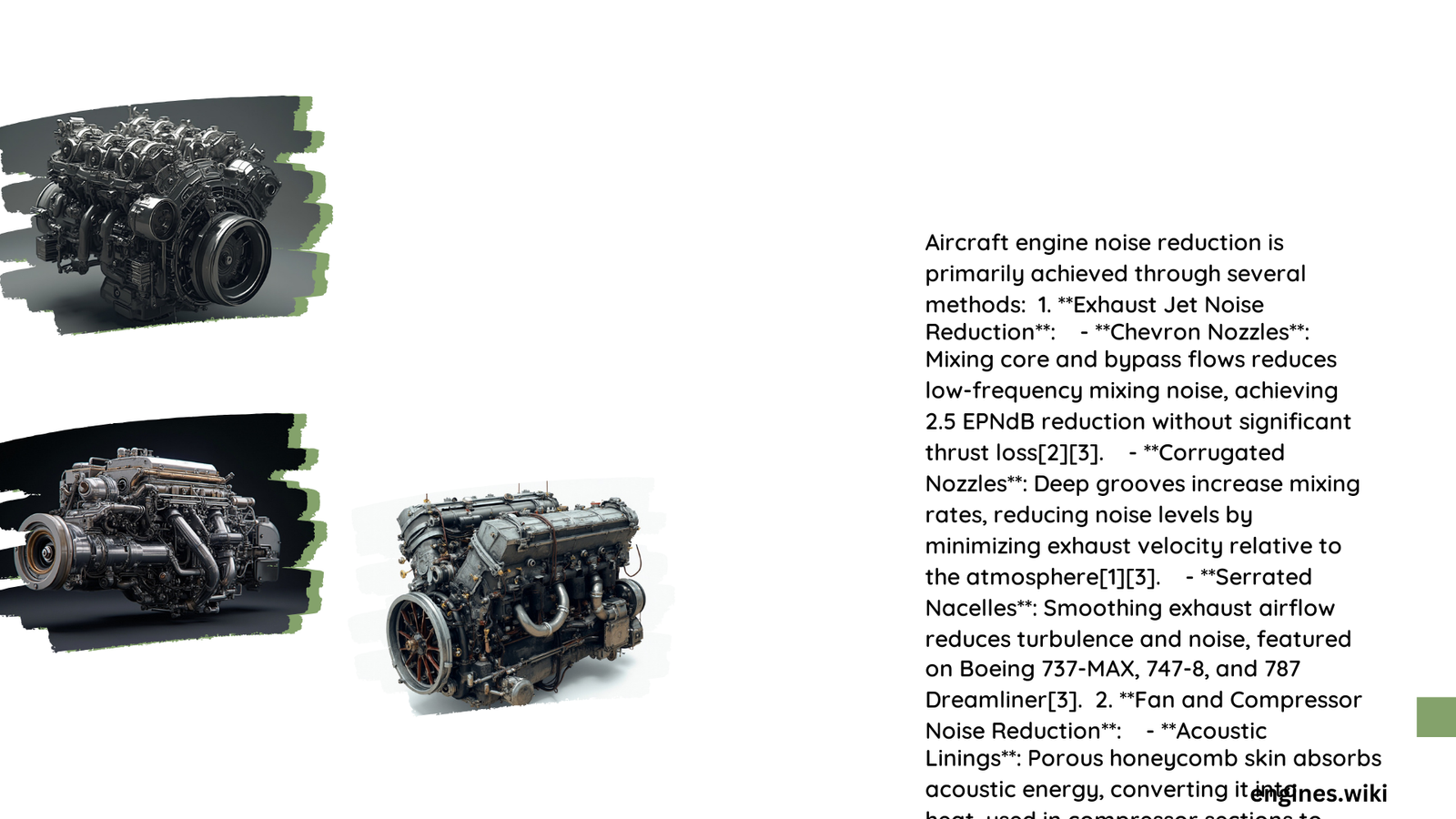Aircraft Engine Noise Reduction: Breakthrough Technologies and Strategies
Summary of Aircraft Engine Noise Reduction
Aircraft engine noise represents a significant environmental and technological challenge in modern aviation. Researchers and engineers are developing groundbreaking materials and techniques that can dramatically reduce sound emissions, potentially transforming the acoustic landscape of air transportation. From ultra-lightweight graphene-based aerogels to sophisticated NASA acoustic treatments, these innovations promise to make air travel quieter, more environmentally friendly, and more comfortable for passengers and communities near airports.
What Makes Aircraft Engines So Noisy?
Aircraft engines generate substantial noise through multiple mechanisms:
- Mechanical Vibrations: Engine component interactions
- Air Turbulence: High-velocity air movement
- Combustion Processes: Rapid energy release
- Exhaust Dynamics: High-pressure gas expulsion
How Do Graphene Oxide Aerogels Reduce Engine Noise?
Material Composition
- Primary Components: Graphene oxide and polyvinyl alcohol
- Structure: Ultra-light, meringue-like lattice
- Density: Approximately 2.1 kg per cubic meter
Noise Reduction Capabilities
- Sound Absorption: Up to 16 decibels reduction
- Comparative Noise Level: Equivalent to a hairdryer
- Integration: Honeycomb scaffold structures in engine nacelles
What Acoustic Treatments Does NASA Recommend?
| Technology | Noise Reduction | Key Features |
|---|---|---|
| Metal Foams | Significant frequency reduction | Durable, heat-resistant |
| Chevron Nozzles | 2.5 EPNdB reduction | Minimal thrust loss |
| Acoustic Liners | Broad frequency suppression | Adaptable placement |
What Are the Challenges in Noise Reduction?
Regulatory Constraints
- Compliance with FAA safety standards
- Fire resistance requirements
- Material durability specifications
Technical Limitations
- Maintaining engine performance
- Balancing weight considerations
- Managing installation complexity
What Innovative Techniques Exist?
- Graphene Oxide Aerogel Integration
- Ultra-lightweight sound absorption
- Minimal weight penalty
-
High acoustic performance
-
Advanced Nozzle Designs
- Chevron-shaped exhaust configurations
- Improved sound dispersion
-
Aerodynamic efficiency
-
Adaptive Acoustic Materials
- Responsive sound-absorbing structures
- Dynamic noise cancellation
- Real-time acoustic adaptation
Future Outlook for Aircraft Noise Reduction
The future of aircraft engine noise reduction looks promising, with emerging technologies offering unprecedented sound suppression capabilities. Continued research in materials science, aerodynamics, and acoustic engineering will likely produce even more sophisticated solutions in the coming years.
Practical Implications
- Environmental Benefits: Reduced noise pollution
- Community Impact: Improved quality of life near airports
- Technological Advancement: Enhanced aviation sustainability
Key Takeaways
- Graphene oxide aerogels can reduce engine noise by up to 16 decibels
- NASA’s acoustic treatments offer multiple noise reduction strategies
- Ongoing research continues to improve aircraft sound suppression technologies

